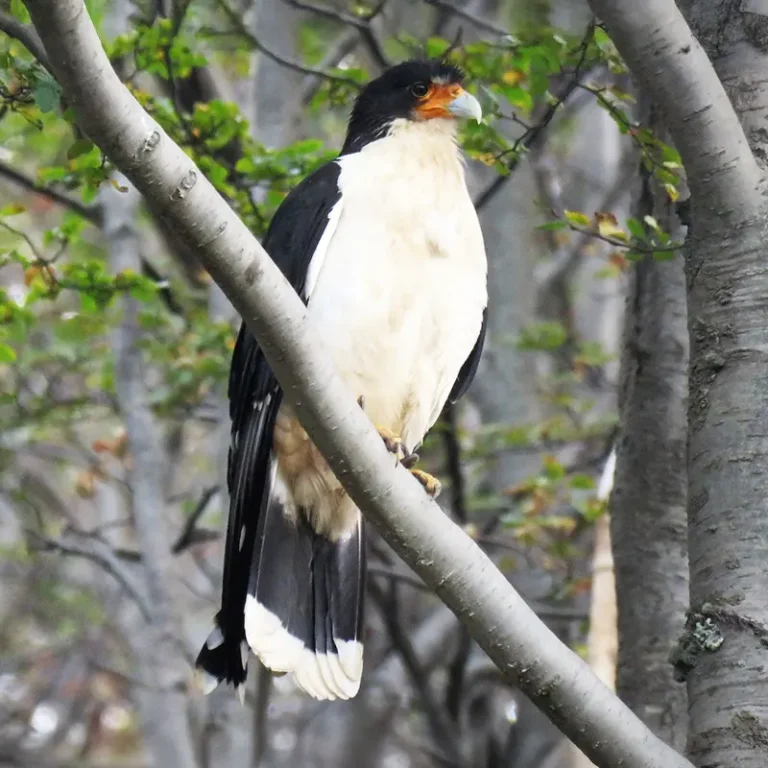Context and objectives
The White-throated Caracara is an enigmatic scavenger bird endemic to Andean Patagonia, of which very little is known. It is listed as a “data deficient” species in Argentina, which means that we do not have the minimum necessary information to know if it is in danger or not. Our work seeks to generate information about its biology: where it breeds, what it eats, and how it behaves during the reproductive season. For this, we work on the high plateaus of the west of the province of Santa Cruz, where we search for nests, descriptions of the environment where they nest, and detailed observations of the adults while they feed their young.
In addition, we work to learn about aspects of its natural history, so we focus on the search for information through the detection of pellets (the small “balls” of undigested remains that they regurgitate) to understand their diet, and reproductive behavior will be documented through observations in the field. With this line of work, we hope to take the first step towards the effective conservation of this unique and little-known species, building a solid knowledge base that allows us to design informed management strategies based on scientific evidence.
Our actions
- Population monitoring in the central area of its distribution.
- Studies on unknown aspects of the species, such as its biology and natural history.
- Studies to try to identify its threats and the impact of each of them.
Protagonists
Habitat and behavior
It inhabits high Andean environments and the high plateaus of Southern Patagonia, usually associated with environments without vegetation, although in the south of its distribution it usually appears in wooded environments. In winter, they move to valleys of lower altitude, generally in desert steppe environments, but also usually associated with open environments. It is frequent in urban landfills in some localities of Patagonia.
Feeding
Mostly carrion, although it may hunt small animals such as lizards and other prey. Also in landfills.
Reproduction
The pairs build or reuse nests of other raptors or bandurrias, on high walls, usually inaccessible.
Curiosity
In the north of its distribution, there are individuals difficult to distinguish from the Andean Caracara, so a hybridization zone may exist.
Threats
Toxic baits and problems associated with feeding near humans can have a great impact on their populations.







